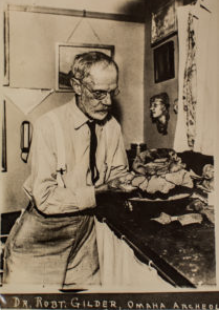Robert Fletcher Gilder (1856–1940)

Painter, Archaeologist, and the Quiet Visionary of the Gilder Family
Born in Flushing, New York, on October 6, 1856, Robert Fletcher Gilder was the sixth child of Rev. William Henry Gilder and one of the lesser-known but deeply talented members of the influential Gilder family. While his siblings gained prominence in literature, music, and journalism, Robert forged his path through the visual arts and field archaeology—an intersection of creativity and science.
Robert eventually settled in Omaha, Nebraska, where he became known for his landscape paintings of the Great Plains and Missouri River Valley. His work was marked by a quiet intensity, capturing the grandeur and transience of the Midwestern horizon. He also developed a serious reputation as an amateur archaeologist, making significant discoveries of Native American sites and contributing to early understandings of prehistoric cultures in the region.
Though geographically removed from Four Brooks Farm, Robert remained connected in spirit and affection to the artistic and intellectual sanctuary cultivated by his brother Richard Watson Gilder and sister-in-law Helena de Kay Gilder. His personal correspondence, field reports, and occasional visits wove him into the family’s broader cultural fabric.
While others in the family were influencing New York’s salons and national publications, Robert was quietly preserving indigenous histories and painting the vast, uncelebrated landscapes of the American interior. His role as an outsider-insider gave him a unique vantage point within the Gilder legacy—someone who preserved not only land and light, but also the memory of place.
Robert died in Omaha on March 7, 1940, where he is buried. His paintings survive in regional collections, and his archaeological work is still cited in studies of Plains cultures. In the broader narrative of the Gilders, Robert remains a figure of deep integrity, quiet pursuit, and artistic sensitivity.